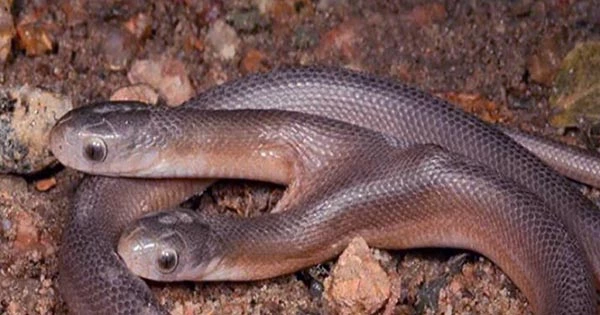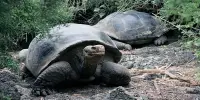Nick Evans, a snake rescuer from South Africa, got more than he bargained for on a call out in Ndwedwe. The owner of the property had spotted a very uncommon two-headed snake in the yard and requested Evans to pick it up after putting it in a bottle. “I just got the most unexpected photograph from Ndwedwe while I was at a braai in Durban North. It was a Southern Brown Egg-eater, a widespread species that is completely safe. This one, however, had two heads!” Evans, the man behind the KZN Amphibian & Reptile Conservation, shared pictures of the little snake in a Facebook post.
When fully grown, southern brown egg eater’s (Dasypeltis inornata), which are primarily nocturnal and non-venomous snakes, often measure approximately 75 centimeters (30 inches) in length. Evans estimates that this little snake is only 30 centimeters long and is likely a youngster. Unfortunately, having two brains may often make it difficult to decide which way to go. Evans noticed that the snake heads tried to move in opposing directions and would sometimes place one head atop the other for easier movement.
As their name indicates, Southern brown egg-eaters are skilled egg-consumers that can gobble up numerous eggs at once despite lacking teeth. With bony protrusions inside the neck that might shatter the shell, it is ingested whole and then regurgitated. Even if feeding a snake with two heads would need twice as much food. Even though two-headed snakes are uncommon, they do exist. Officially referred to as bicephaly, the abnormality is expected to affect 1 in 10,000 snake births and is typically caused by twins who don’t separate.
It is challenging to be certain, though, as it is believed that only a few number of these rare snakes survive long enough to be thoroughly studied. Fortunately, Evans has now brought the youngster to be looked for by a professional, so our little snek friend has a happy ending. The snake is better off being cared for by a professional because it has difficulty moving, even when it can agree on where to go. This makes it easy prey for any possible predators like snake eagles.
















